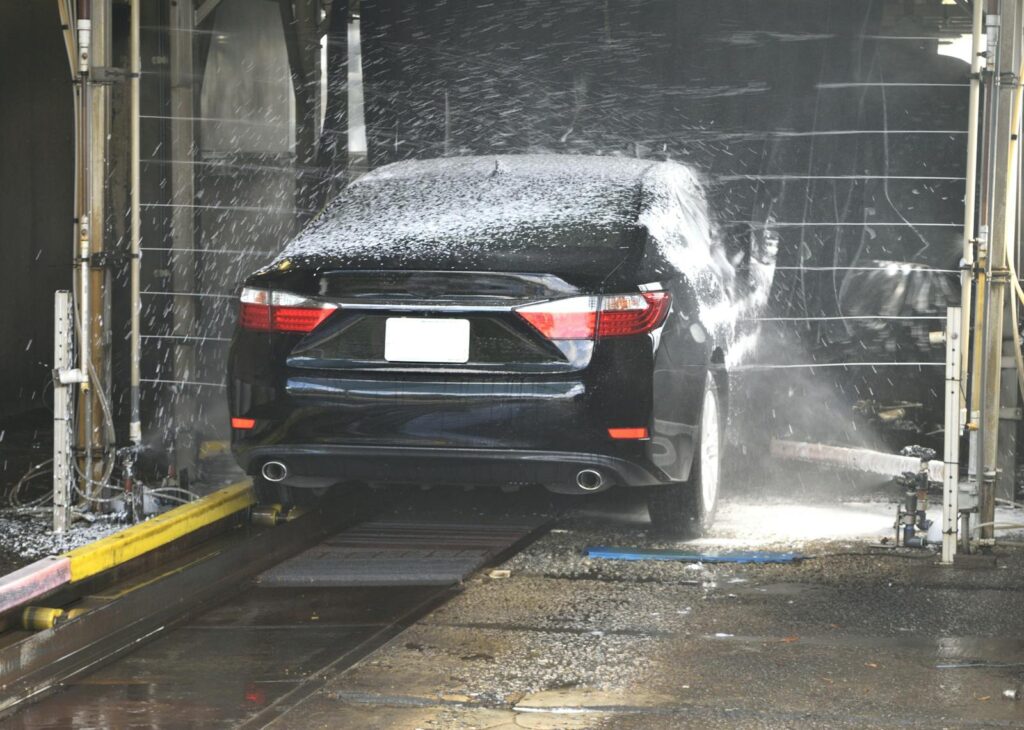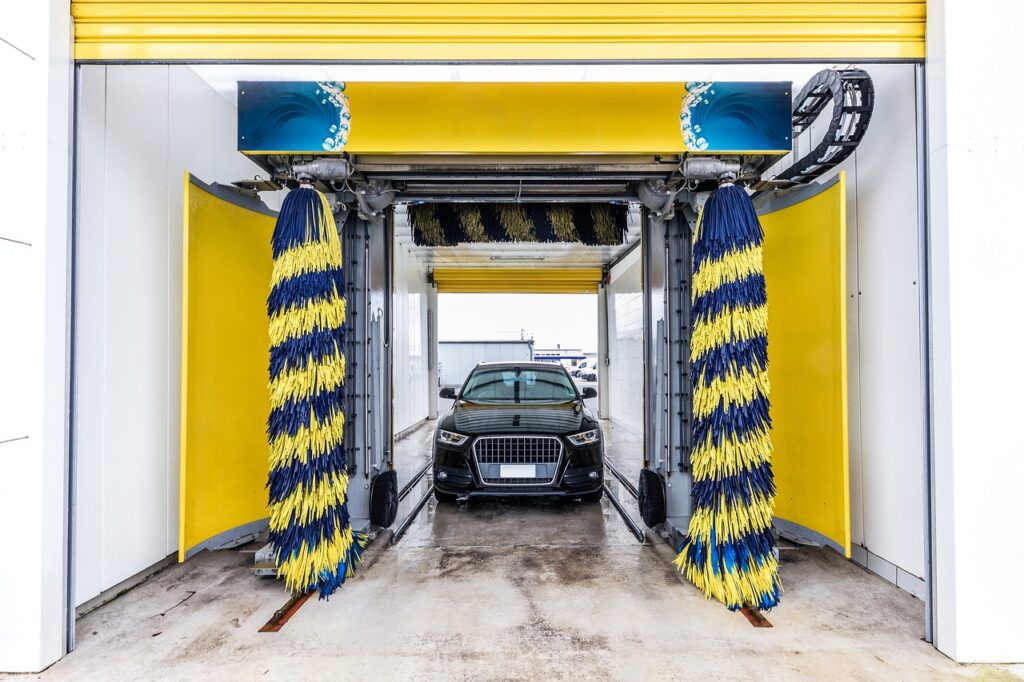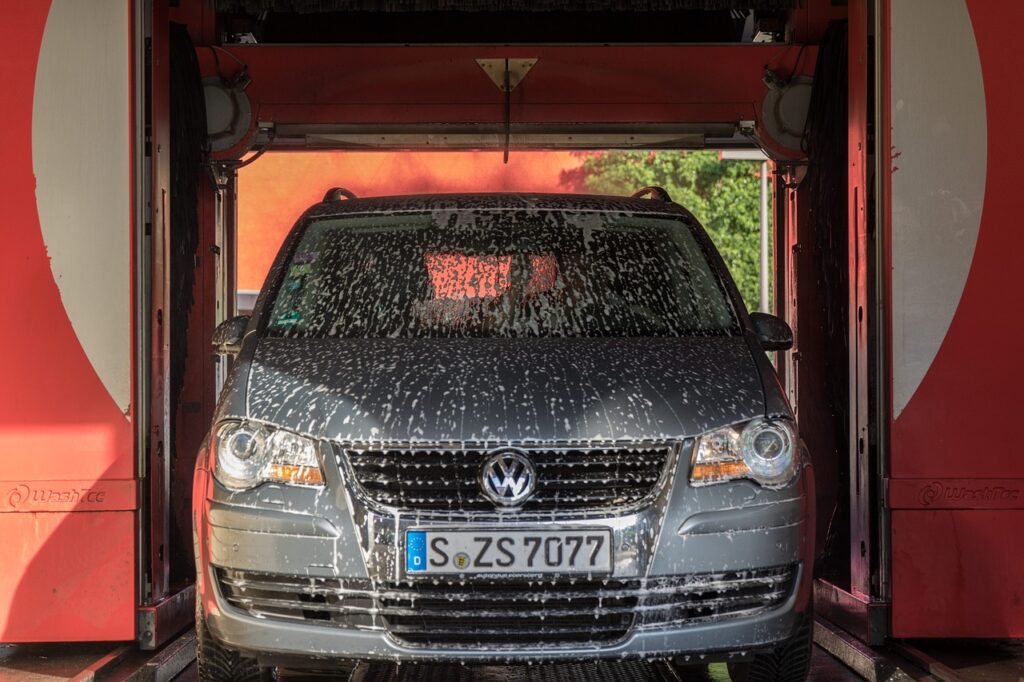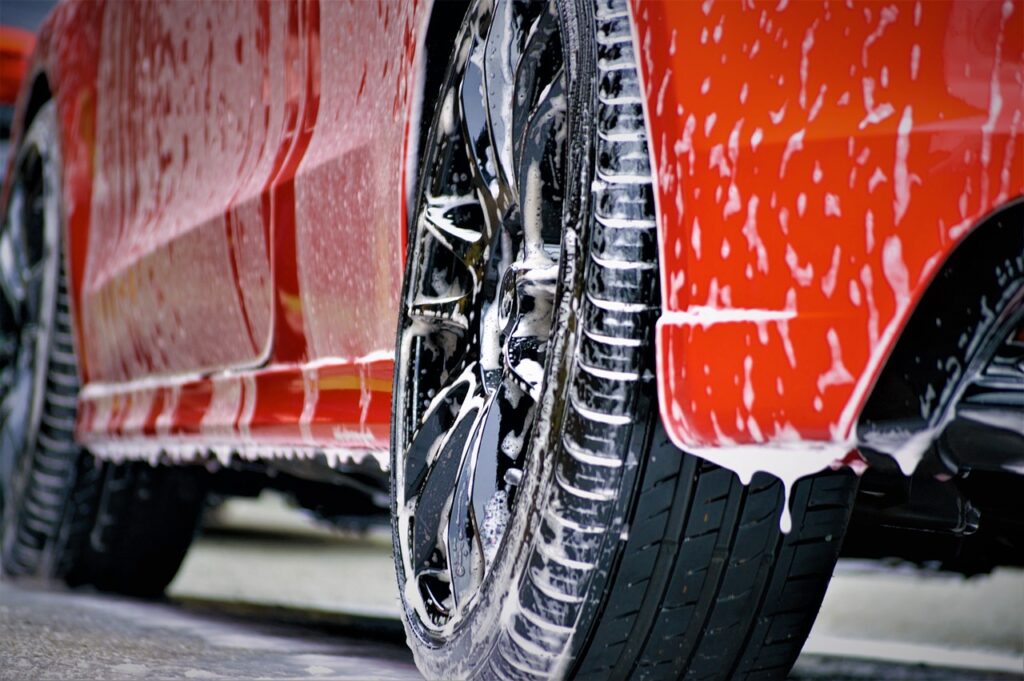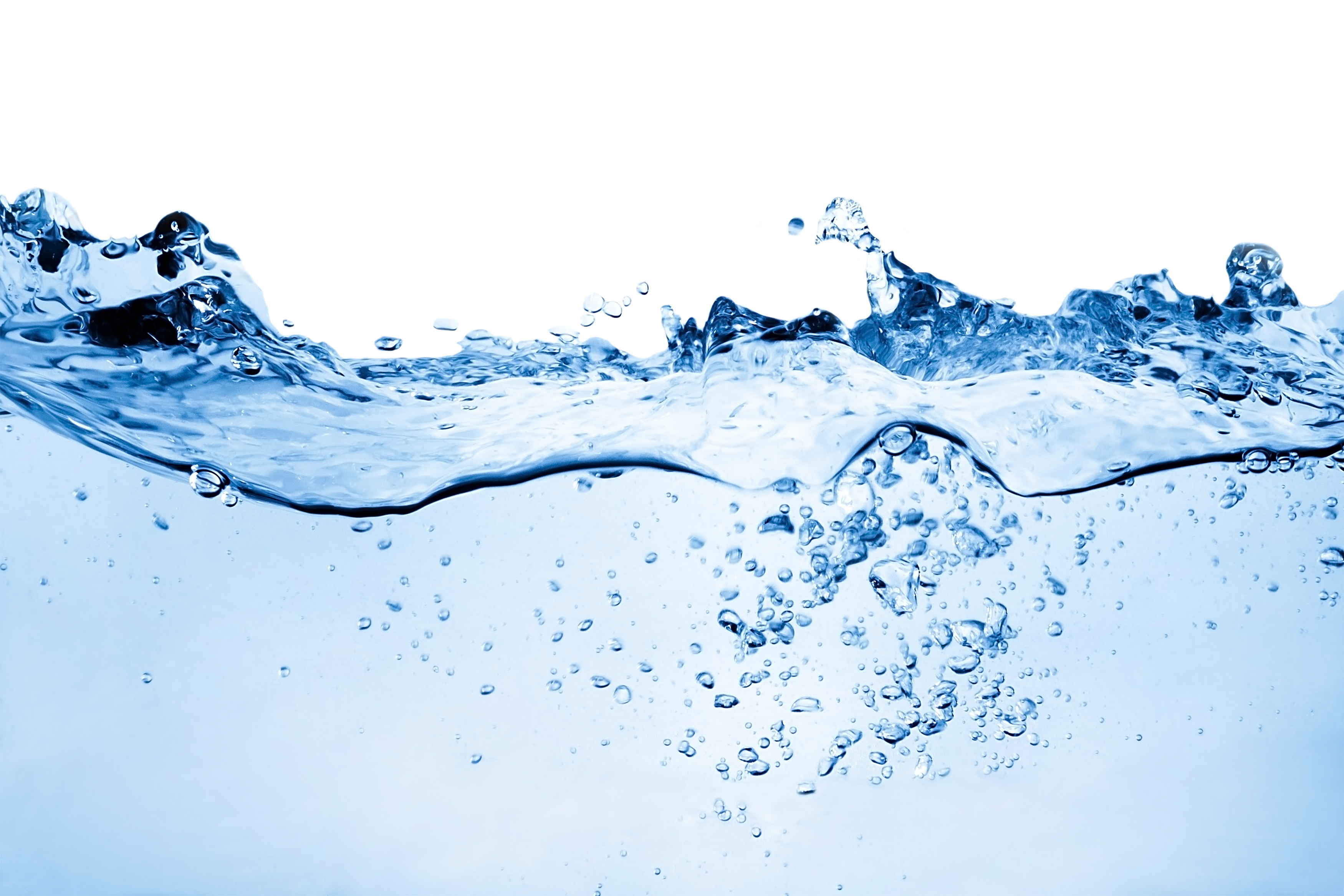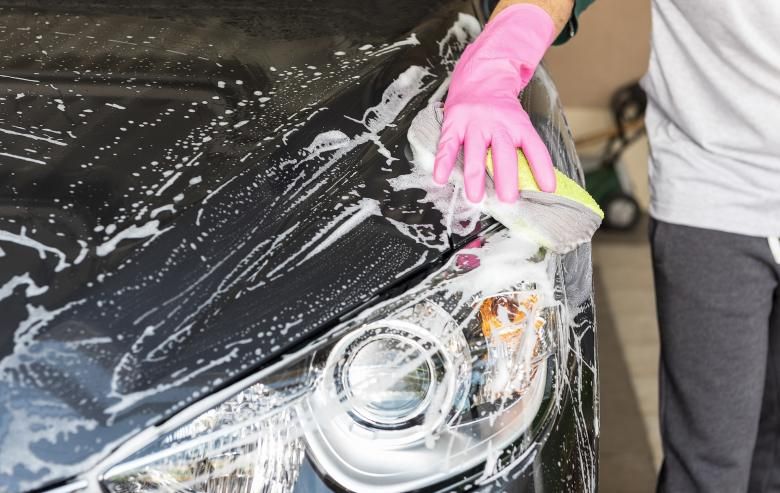
The gleaming finish of a freshly washed car is a sight to behold, but have you ever stopped to consider the potential consequences of frequent car washes on the paint job? Many car owners assume that any method of cleaning will leave their vehicle spotless and protected. Yet, a growing body of evidence, combined with decades of automotive expertise, reveals a different truth.
Indeed, the world of car care is rife with outdated advice and practices that can, over time, subtly but significantly harm your car’s most visible and valuable asset: its paint. From the powerful degreasers hiding in your kitchen cabinet to the automated systems promising convenience, understanding what truly safeguards your finish is paramount.
In this comprehensive guide, we will delve into the specific car wash types and practices that pose a real threat to your vehicle’s clear coat. By shedding light on these hidden dangers, we aim to empower you with the knowledge to make informed choices, ensuring your car maintains its showroom-fresh appearance for years to come. Let’s uncover the truths behind common car wash myths and preventable damages.
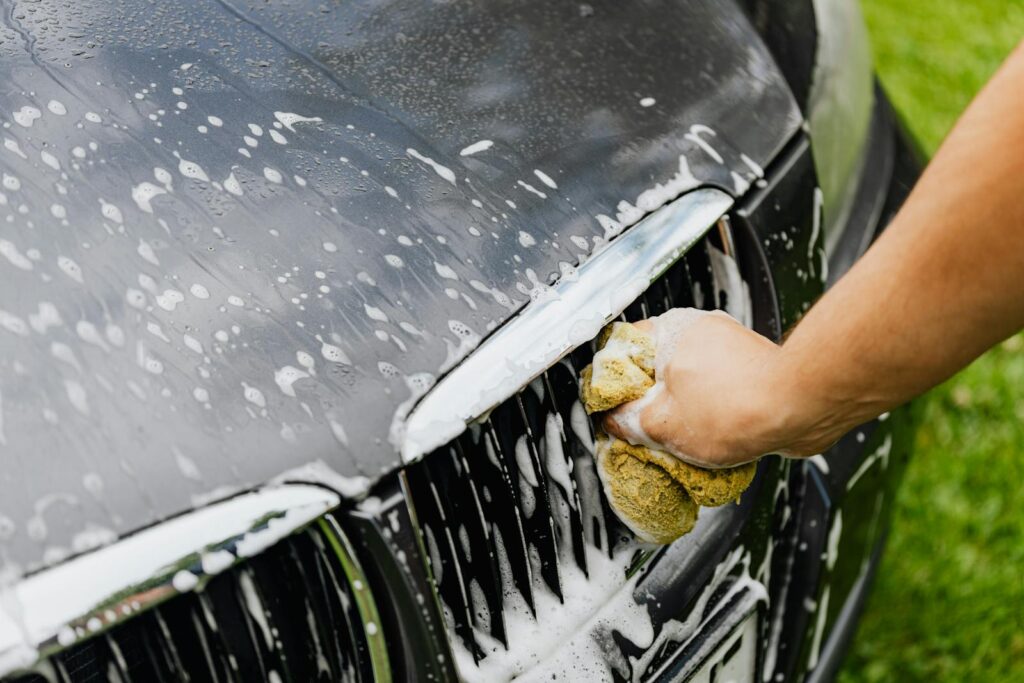
1. **Soft-Cloth Automatic Car Washes: The Hidden Abrasive Trap**Some car washes, though not “touchless,” feature flaps of cloth designed to massage your car clean, appearing less aggressive than traditional brushes. This perception often leads car owners to believe they are a safer alternative for their vehicle’s delicate paint finish.
However, these soft cloth scrubbers possess a significant drawback. They have the potential to retain abrasives from every car that has preceded yours, often to a greater extent than even traditional brushes. These latent abrasives, essentially microscopic particles of dirt and grit, become embedded within the cloth material.
When these contaminated cloths come into direct contact with your car’s paint, they act as sandpaper, grinding tiny bits of sand and dirt into your clear coat. This process is a primary offender when it comes to car finish damage, leading directly to unsightly swirl marks and micro-scratches that degrade the paint’s clarity and depth over time.
Regular exposure to such contaminated soft-cloth systems can accelerate paint deterioration. While they may seem gentle, the accumulation of abrasive particles in the cleaning material presents a clear and present danger to your vehicle’s exterior, requiring expensive paint correction to remedy.
2. **Traditional Automatic Car Washes with Stiff Bristle Brushes: Abrasive Action on Your Finish**When discussing automatic car wash damage, traditional brush-based systems are frequently cited as a primary cause. These older-style car washes rely on rotating bristle brushes and mechanical agitation to remove dirt and grime from vehicle surfaces. While effective at cleaning, they inherently create conditions ripe for paint damage.
These mechanical components often drag contaminants across your car’s paint surface. Every particle of dirt, sand, or road debris that gets caught in the brushes is effectively turned into an abrasive agent. This constant friction and scraping action leads to microscopic scratches that accumulate with each wash.
Over time, the way car wash scratches paint becomes visibly apparent as swirl marks, those characteristic circular patterns seen under direct sunlight, and an overall dullness in the paint finish. The revolving stiff bristle brushes used in these systems are particularly notorious as a source of these unattractive swirl markings.
Despite some head-to-head comparisons suggesting these old-school washes might hold onto abrasives less than newer soft-cloth alternatives, the fact remains that regular use of brush-based washes will definitely cause cumulative damage. This consistent abrasive contact reduces paint clarity and depth, making your car appear older than it is and significantly decreasing its resale value.
3. **Touchless Car Washes Relying on Harsh Caustic Detergents: Chemical Assault on Clear Coats**For many car owners seeking to avoid physical contact and potential scratches, touchless car washes, often referred to as “laser wash” systems, appear to be a safer choice. These systems eliminate direct physical contact with the vehicle, reducing the abrasive effect on the paint finish.
However, this lack of direct contact comes with a significant trade-off. To compensate for the absence of scrubbing, which is necessary to dislodge some grit and grime, touchless car washes typically employ more caustic and stronger detergents. These chemicals are designed to aggressively break down dirt without mechanical agitation.
Regular exposure to these harsh chemicals has the potential to degrade your vehicle’s finish over time. While a touchless car wash might be acceptable once in a while, consistent use can strip away the protective wax coating, leaving the paint vulnerable. In extreme cases, these chemicals can even cause paint to become brittle or discolored.
It is crucial to be aware that some older touchless facilities may use overly harsh chemicals, further increasing the risk of paint degradation. While they prevent physical scratches, the chemical assault on your clear coat can lead to fading, reduced paint clarity, and compromised protection against environmental elements.
4. **Automatic Washes Prone to the Contamination Trap: The Transfer of Damage**One of the most insidious dangers lurking in many automatic car washes is what can be termed the ‘contamination trap.’ This phenomenon arises from the sheer volume of vehicles processed by these facilities on a daily basis, often using the same washing equipment.
Each car entering an automatic wash brings its own unique collection of road salt, tar, tree sap, and various abrasive particles accumulated from its travels. When these contaminants are not properly and thoroughly removed from the washing equipment—be it brushes, cloths, or even recycled water—between vehicles, they don’t simply disappear.
Instead, these abrasive particles transfer from car to car, becoming embedded within the washing materials. This cross-contamination means that your vehicle might inadvertently be “cleaned” with brushes or cloths that are effectively embedded with abrasive debris from the last dozen cars that passed through the system.
The consequence is akin to using sandpaper disguised as a cleaning cloth. This scenario significantly increases the likelihood of noticeable swirl marks and fine scratches on your vehicle’s paintwork, as dirt and grit from other cars are ground into your finish. It’s a hidden risk that compounds with every wash, undermining the very purpose of cleaning your car.
5. **Hand Washing with Dirty or Improper Tools: DIY Disasters on Your Paint**The image of carefully hand washing a car on a sunny Saturday is a classic, often touted as the safest method for achieving a perfect finish. However, the truth is that not all hand washes are equal, and improper techniques or tools can inflict more damage than many realize.
One common mistake involves using old rags or dirty sponges for cleaning. These materials, unlike clean, soft microfiber towels or mittens, can easily pick up and hold tiny bits of sand and dirt. When these contaminated rags or sponges are rubbed against your car’s clear coat, they effectively grind those gritty particles into the paint, leading to unsightly swirl marks.
Another significant risk in hand washing, often highlighted by auto detailers, is the practice of using the same sponge or wash mitt for all surfaces. Specifically, cleaning the vehicle’s painted surfaces with the same tool used for tires and wheel wells is a recipe for disaster. Tires and wheel wells are typically covered in heavy brake dust, road grime, and larger abrasive particles.
Transferring these abrasives from the dirtiest parts of the car to the painted surfaces ensures that grit is introduced directly into the cleaning process, causing scratches. To mitigate this, detailers emphasize the importance of segregating sponges and religiously rinsing and cleaning them, along with microfiber towels, to prevent such avoidable damage.
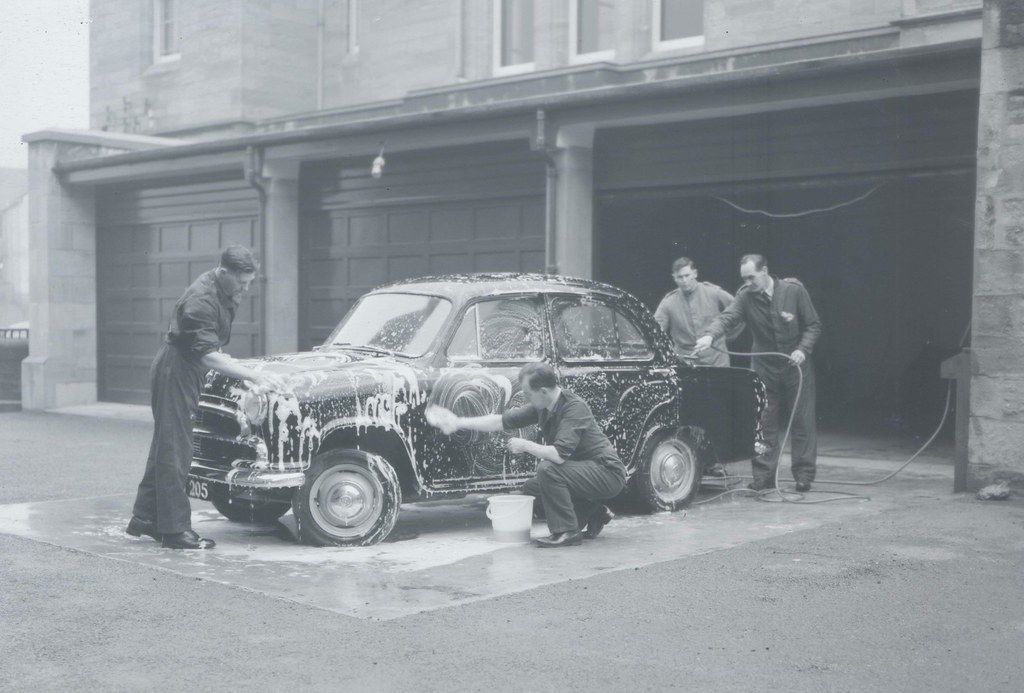
6. **Using Household Soaps or Dish Detergents: Stripping Away Essential Protection**It can be tempting to reach for whatever cleaning solution is readily available under the kitchen sink, such as dish soap or other general household cleaners, when washing your car. This seemingly convenient choice, however, is a recipe for long-term paint damage.
The fundamental issue lies in the chemical composition of these household products. General household soaps and dish detergents are specifically formulated as powerful degreasers. Their primary purpose is to break down tough food residues and grease on dishes, making them highly effective for kitchen tasks.
On your car’s exterior, this degreasing power becomes detrimental. These harsh chemicals strip away the vital protective wax layers or sealants that shield your paint. These protective coatings are your vehicle’s first line of defense against environmental aggressors.
Once stripped, the paint is left vulnerable to a host of damaging elements, including harsh sun exposure, corrosive road grime, and unsightly water spots. Dedicated car wash soaps, in contrast, are pH-balanced, meaning they are designed to clean effectively without compromising these crucial protective layers, ensuring your paint remains intact and healthy.

7. **Car Washes with Excessive Water Pressure: When Force Becomes Harm**While high-pressure water jets are effective at dislodging stubborn dirt and grime from your vehicle, their use, especially in automated car washes, presents a major concern for paint integrity. The sheer force of these jets can be far too powerful for sensitive surfaces like car paint and vinyl coverings.
This intense bombardment of water can lead to several forms of damage. For painted surfaces, excessive water pressure can cause rips, scuffs, and chips, compromising the exterior integrity of your vehicle’s finish. It can even force water into tiny paint imperfections, potentially exacerbating existing issues.
Furthermore, vinyl coatings, commonly used for car wraps or decals, are particularly vulnerable to damage from high-pressure water jets. The powerful streams can cause the vinyl seams to lift, crack, or peel, resulting in a less-than-perfect appearance and premature deterioration of the wrap.
Subjecting your vehicle to automated car washes that regularly employ such high-pressure water jets can dramatically shorten the lifespan of the outer coat of paint. The repeated physical force wears down the protective layers, leaving your car’s surface more susceptible to environmental variables like UV rays, rust, and further grime adhesion, ultimately leading to a dull, damaged finish.

8. **Neglecting Waxing or Sealant Application: Leaving Paint Unprotected**Beyond the immediate cleaning process, a critical error that compromises your vehicle’s paint integrity is the neglect of regular waxing or sealant application. Many car owners view waxing as an aesthetic enhancement, solely for an extra shine, rather than a vital protective measure. This perception significantly underestimates the role of a quality wax or sealant in safeguarding your car’s finish.
These protective layers, whether traditional carnauba wax or advanced ceramic and graphene formulations, serve as a robust shield between your paint and the harsh external environment. They are designed to repel water and dirt, effectively minimizing the adherence of stains and preventing etching caused by environmental fallout. Furthermore, a well-applied wax or sealant acts as a powerful blocker against harmful ultraviolet (UV) rays, which are a silent but potent enemy leading to oxidation, fading, and a dull appearance over time.
Skipping this crucial step leaves your paint directly exposed to a barrage of damaging elements. Contaminants such as industrial fallout, bird droppings, tree sap, and road grime can then bond directly with the clear coat, making them much harder to remove without causing abrasive damage. Over time, this direct exposure leads to visible fading, an increase in hard-to-reverse stains, and rough spots that diminish your car’s aesthetic appeal and value.
For optimal protection, Consumer Reports advises making waxing a consistent part of your car care regimen. High-quality car washes, such as Wash Hounds, offer options to include wax protection, using products specifically chosen to enhance and preserve your vehicle’s finish. This simple yet effective step is an indispensable strategy for maintaining a stronger, shinier, and healthier paint job for the long haul.
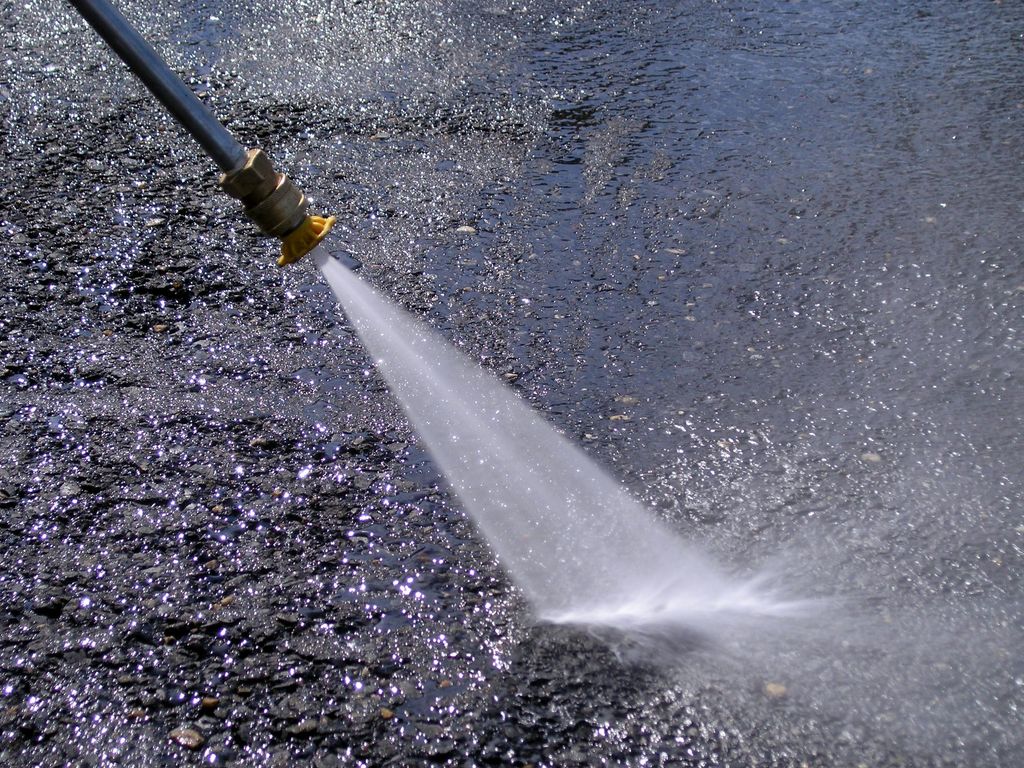
9. **Washing in Direct Sunlight: The Recipe for Etched Water Spots**The seemingly innocent act of washing your car under the bright, warm sun can actually be one of the most detrimental practices for your vehicle’s paint finish. While the intention is often to achieve a spotless, sparkling clean, washing in direct sunlight or during hot temperatures creates conditions ripe for severe paint damage, particularly in the form of stubborn water spots.
When water, mixed with soap or simply rinse water, evaporates rapidly on a hot surface, it leaves behind mineral deposits and contaminants. These deposits, often rich in calcium and magnesium, don’t simply sit on the surface; the heat causes them to bake onto the clear coat, leading to what are known as etched water spots. Unlike simple water stains, etched spots have chemically bonded with the paint, making them exceedingly difficult to remove without abrasive polishing.
This issue is particularly prevalent during summer months, where the combination of high temperatures and quick-drying water droplets exacerbates the problem, leaving visible markings and permanent spots on the surface of your car. Even after a thorough wash, these spots can dramatically detract from the car’s aesthetic appeal, making the paint appear hazy, dull, and uncared for, despite the cleaning effort.
To avoid this pervasive problem, it is crucial to adjust your washing schedule. The best practice is to wash your car in the shade, during cooler parts of the day, or inside a garage. This allows the water to evaporate slowly, or ideally, gives you ample time to dry the car thoroughly before any spotting can occur, ensuring a pristine, spot-free finish.

10. **Inadequate Drying Methods: Introducing Scratches and Spots Post-Wash**After meticulously washing your vehicle, the drying phase is often overlooked or rushed, yet it presents another critical juncture where paint damage can easily occur. Inadequate drying methods, or the use of improper tools, can quickly negate careful cleaning efforts, introducing new scratches, swirl marks, and unsightly water spots that diminish the paint’s pristine appearance.
One of the most common mistakes is allowing the car to air dry, especially in conditions where water evaporates quickly. As discussed, this leads to the formation of water spots due to minerals in the water being left behind and baking onto the clear coat. These spots can etch into the paint over time, causing permanent blemishes that require aggressive correction to remove.
Beyond water spots, the tools and techniques used for drying are equally vital. Using rough, dirty, or old towels, rags, or even t-shirts can inadvertently drag abrasive particles across your car’s delicate clear coat. These contaminated drying cloths act like sandpaper, embedding microscopic grit into the paint and creating fine scratches and swirl marks that become highly visible under direct light.
The key to safe drying lies in using clean, soft, and highly absorbent microfiber towels or dedicated drying towels. These materials are engineered to gently lift and trap water without abrading the surface. Moreover, gently blot or drag the towel across the surface in straight lines, turning it frequently to expose clean sections, to ensure a streak-free, spot-free finish without inflicting damage.
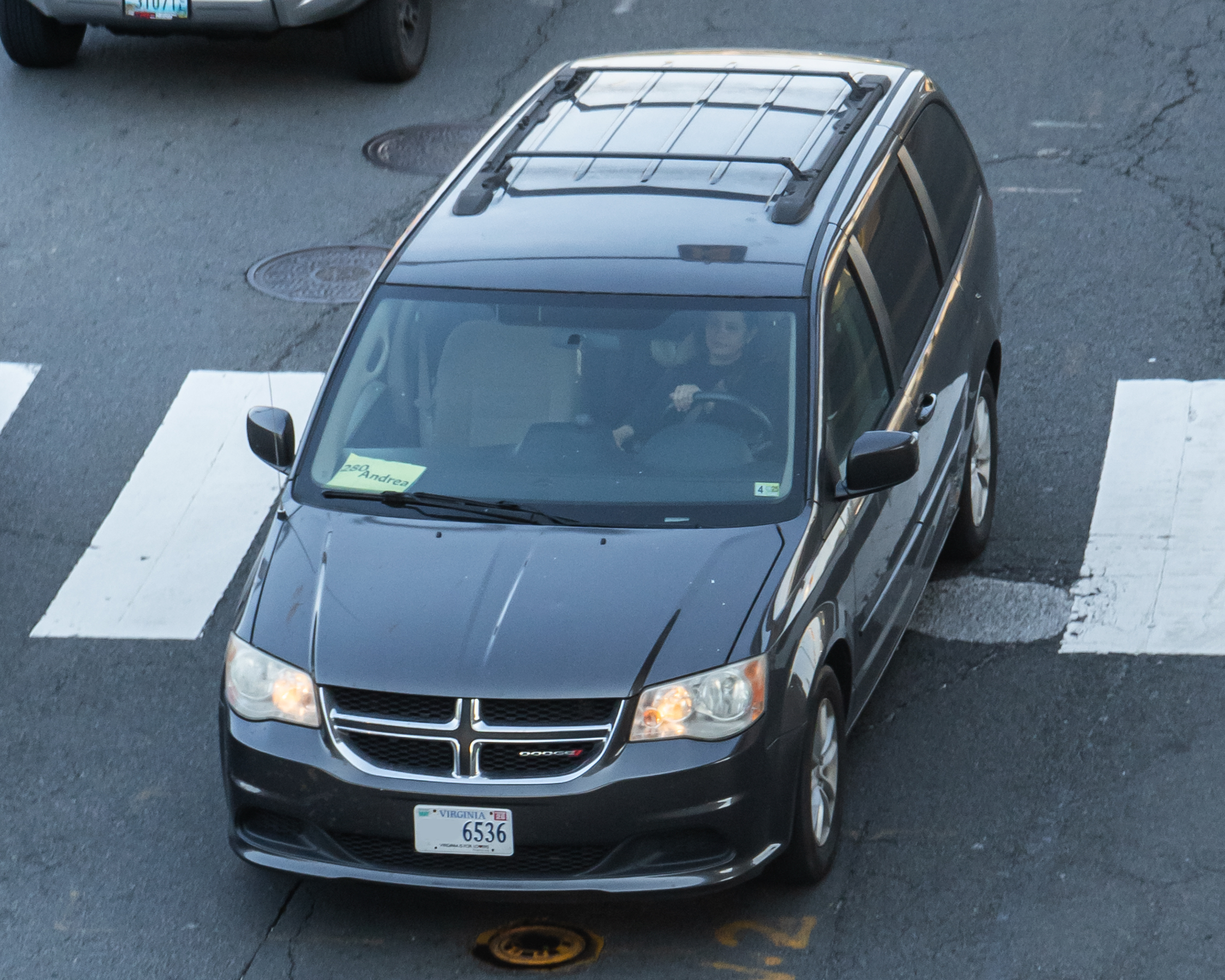
11. **Damage to Windshield Wipers: Mechanical Vulnerabilities in Automatic Systems**While the primary focus of car wash damage often centers on paint, other critical components of your vehicle are also at risk, notably the windshield wipers. These seemingly robust parts, essential for clear visibility and safe driving, are surprisingly vulnerable to the powerful forces within automatic car wash systems, which can lead to significant mechanical damage.
The aggressive combination of high-pressure water jets and fast-moving brushes or cloth strips found in many automatic washes can easily dislodge, bend, or even snap off windshield wipers. This is particularly concerning for modern vehicles equipped with rain-sensing wipers, where the sudden impact of water can trigger their activation, causing them to operate against the powerful cleaning equipment.
If rain-sensing wipers are left in the “ON” position, they can become severely damaged or break entirely, resulting in an immediate repair expense and compromised driving safety. To proactively prevent this specific type of damage, vehicle owners must ensure their rain-sensing wipers are explicitly switched to the “OFF” setting before entering any automatic car wash.
An additional layer of protection can be achieved by manually pulling the wiper arms away from the windscreen if the design allows, further minimizing the risk of unintended contact. For those prioritizing absolute caution, hand washing remains a highly recommended alternative, as attendants can carefully clean these areas manually, eliminating the possibility of mechanical stress or breakage.
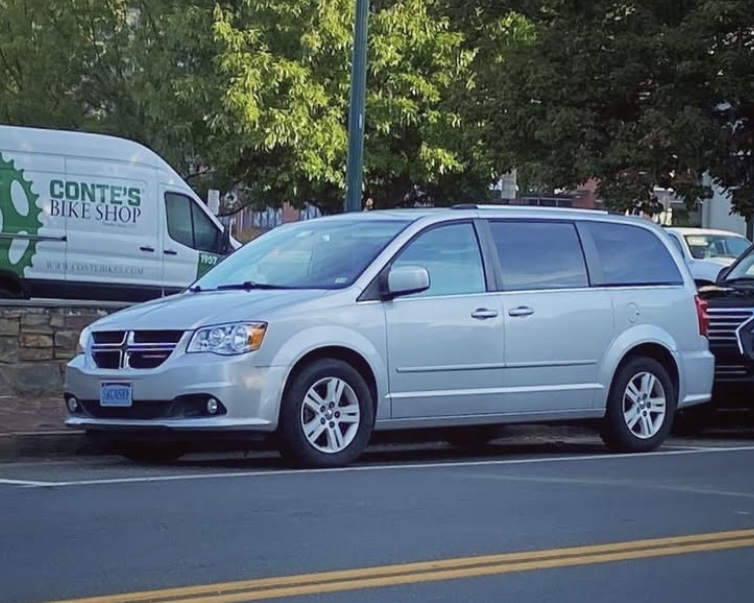
12. **Risk of Damage to Rearview Mirrors and Antennas: Overlooked Vulnerabilities**Beyond the paint and windshield wipers, automatic car washes pose a notable threat to other external, often overlooked, components such as rearview mirrors and antennas. These items, crucial for both functionality and aesthetic integrity, are susceptible to damage from the intense and uncontrolled environment of automated cleaning systems, potentially leading to costly repairs and diminished vehicle appearance.
Rearview mirrors, especially those with advanced features, are particularly delicate. The high-pressure water jets and rapid mechanical actions of brushes or cloth strips can exert considerable force on these components. If a mirror is already slightly loose, or if the pressure is excessive, it can lead to cracking, dislodgement, or even complete detachment, rendering it inoperable and unsafe.
Similarly, external antennas, whether traditional whip antennas or newer shark fin designs, are vulnerable. The vigorous movements of washing equipment can bend, snap, or otherwise damage antennas, impacting radio reception or connectivity for built-in navigation and communication systems. The risk extends to other small trim pieces and accessories, which can be snagged or ripped off by powerful forces.
To mitigate these risks, Consumer Reports advises vigilance. Before entering an automatic car wash, fold in power mirrors if possible, remove any removable antennas, and ensure all external trim and accessories are securely fastened. Choosing a reputable, modern facility that uses gentler cleaning technologies and regularly maintained equipment can significantly reduce the chances of such incidental, yet impactful, damage.
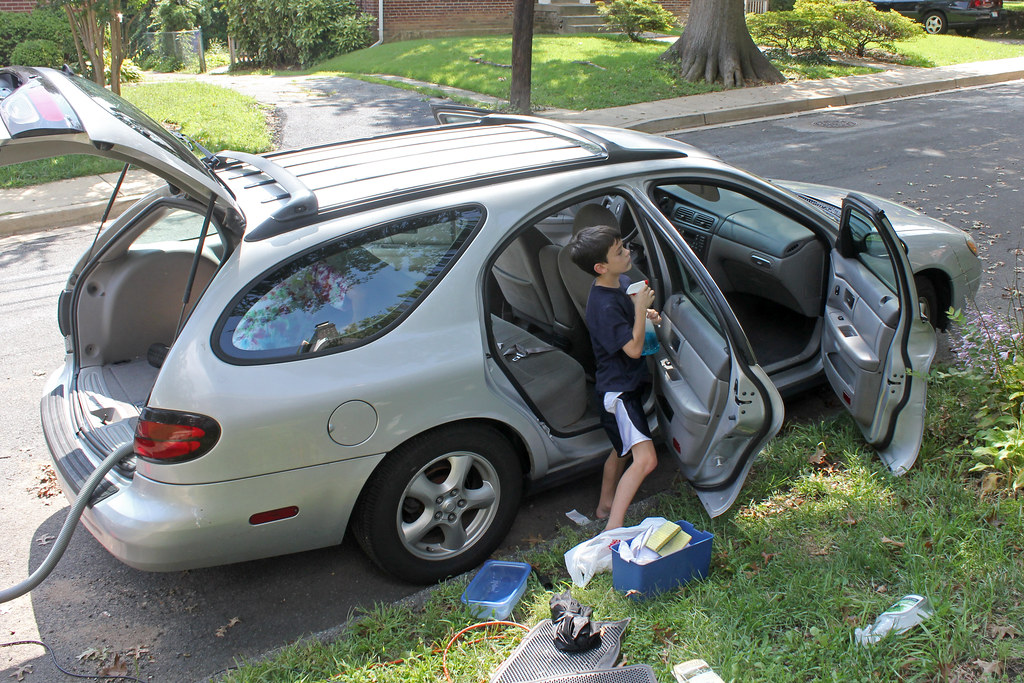
13. **Wheel Rim Damage: Abrasives and Chemicals Targeting Alloys**While attention is often drawn to the paint finish, vehicle wheels and rims are also highly susceptible to damage from improper car wash practices. These components, often made of sensitive alloys and intricate designs, face a unique combination of abrasive forces and harsh chemicals in many car wash environments, leading to unsightly blemishes and long-term degradation.
Wheels accumulate an extraordinary amount of brake dust, road grime, tar, and metal particles. In automatic car washes, the same brushes and cloths that clean the body of the car are used on the wheels. These materials become heavily contaminated with abrasive wheel grime, which is then ground into the delicate finishes of alloy rims, causing scratches, scuffs, and a dull appearance.
Moreover, touchless and some automatic systems often employ powerful, highly acidic or alkaline detergents specifically designed to cut through tough brake dust and road film on wheels. While effective, regular exposure to these aggressive chemicals can corrode, discolor, or strip the clear coat applied to many alloy wheels. Over time, this chemical assault can lead to permanent staining, pitting, and a significant reduction in the aesthetic appeal of the wheel finish.
To protect your valuable wheels, it is recommended to use separate cleaning tools specifically for wheels—a dedicated wheel brush and wash mitt—and pH-neutral wheel cleaners. Professional washes often use specialized processes and products for wheels to ensure they are cleaned thoroughly without compromising their finish, an essential part of preserving your vehicle’s overall appearance and maintaining its resale value.
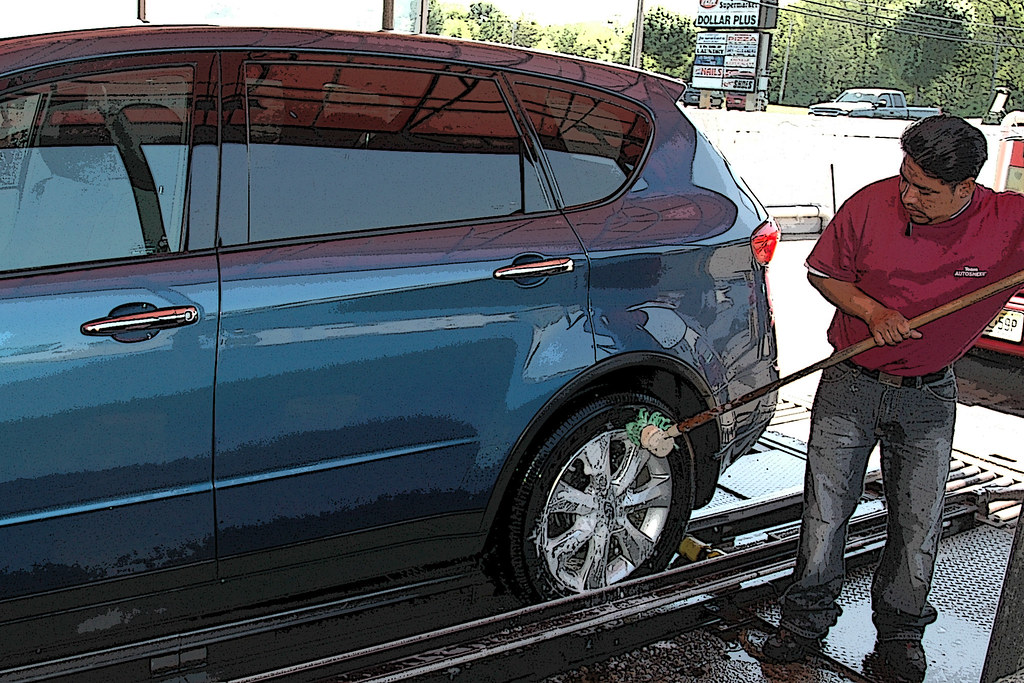
14. **Overlooking Underbody Cleaning: Hidden Corrosion Risks**One aspect of car washing frequently neglected, especially by DIY methods and some less comprehensive automatic washes, is the thorough cleaning of the vehicle’s underbody. While not directly impacting visible paint finish on the exterior panels, ignoring this area poses a significant and hidden risk of corrosion and structural damage that can severely undermine your vehicle’s longevity and safety.
The undercarriage of a vehicle is constantly exposed to a barrage of corrosive elements: road salt, brine solutions used for de-icing, mud, dirt, and various chemicals. These substances cling to frame components, suspension parts, brake lines, and exhaust systems. Over time, this accumulation of corrosive materials can accelerate rust formation, weakening crucial structural elements and potentially compromising the integrity of mechanical systems.
Many standard car washes, particularly basic automatic options, do not include an effective underbody wash. They might offer a superficial rinse, but often lack the targeted, high-pressure jets and specialized cleaning solutions necessary to dislodge and neutralize the tenacious corrosive agents adhering to the chassis. This oversight allows rust to proliferate silently beneath your vehicle, out of sight until significant damage has already occurred.
For comprehensive protection, Consumer Reports advises seeking out car washes that explicitly offer advanced underbody cleaning options. Modern facilities often incorporate powerful undercarriage washes designed to blast away corrosive salts and grime from areas you simply cannot reach at home, a proactive and indispensable strategy for safeguarding your vehicle’s structural health and preserving its long-term value against hidden corrosion.
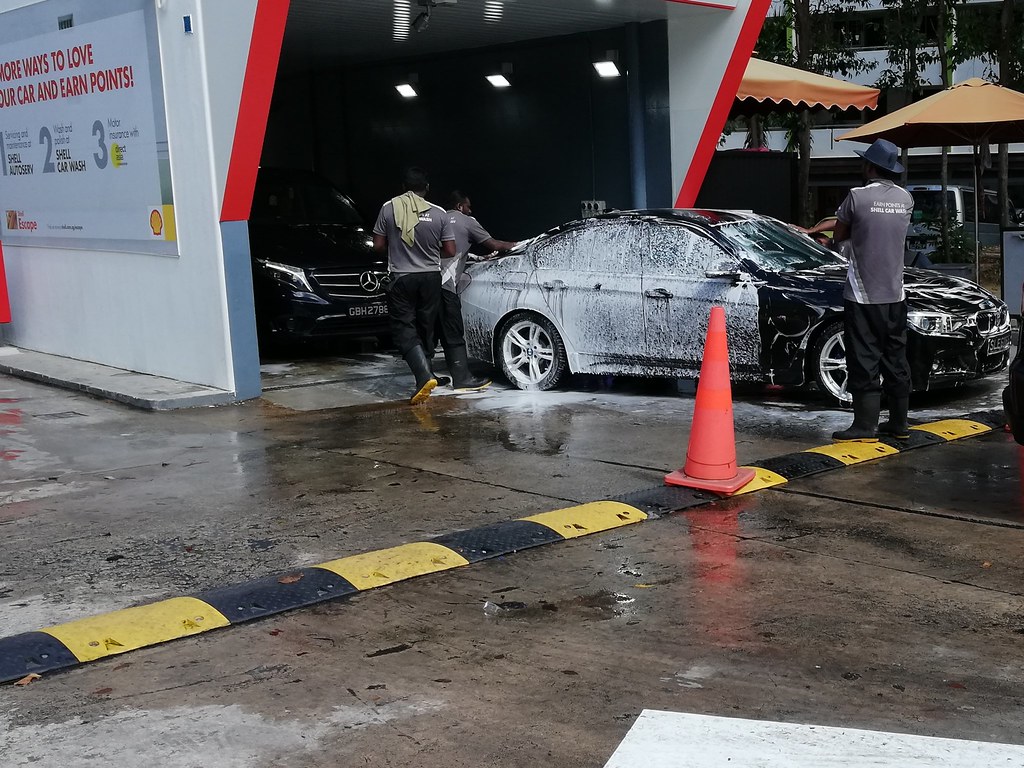
15. **Improperly Chosen Car Wash Soaps: The Silent Strippers of Paint Protection**While the dangers of using household soaps are widely understood, another insidious risk to your car’s paint finish comes from improperly chosen or low-quality car wash soaps themselves. The assumption that any product labeled “car wash soap” is safe can be misleading, as not all formulations are created equally, and some can still compromise your paint’s vital protective layers.
The fundamental issue revolves around the pH balance of the cleaning solution. Optimal car wash soaps are specifically formulated to be pH-balanced, ensuring they effectively lift away dirt and grime without chemically reacting with or stripping away the existing wax, sealant, or ceramic coatings that provide crucial protection to your vehicle’s clear coat.
Conversely, car wash soaps that are too aggressive or have an improper pH balance, often found in cheaper commercial washes or budget-friendly consumer products, act as silent strippers. They may effectively clean the surface, but in doing so, they gradually erode these protective layers with each wash. This effect is cumulative and often goes unnoticed until the paint begins to show signs of accelerated wear, such as fading, dullness, or increased vulnerability.
To safeguard your paint, it is paramount to inquire about the type of shampoo used at commercial car washes. Reputable establishments prioritize pH-neutral, high-quality car shampoos that clean effectively while preserving the integrity of your vehicle’s protective coatings. For DIY washers, selecting a trusted, pH-balanced car wash product is an essential investment in maintaining your car’s pristine appearance.
In this comprehensive exploration, we’ve peeled back the gleaming facade of car care, revealing the subtle yet significant dangers that can lurk within seemingly innocent washing routines. From abrasive brushes and harsh chemicals to overlooked details like waxing and proper drying, the path to a pristine finish is fraught with potential pitfalls. Yet, armed with this knowledge, you are now empowered to navigate the world of car washes with discerning eyes, making choices that truly protect and preserve your vehicle’s most visible asset. Your car’s paint is more than just a color; it’s a testament to its value and your care. By understanding these risks and adopting smarter practices, you ensure your ride not only shines brilliantly today but retains its showroom luster and robust protection for every journey ahead.

